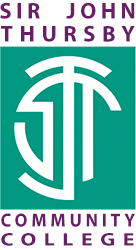Topic 4 Year 9 Geography
| Geography | |||
| Topic | UK Physical landscapes - Ice | ||
| No of lessons | 11 | ||
| When is it happening | Term 3 - 6 weeks | ||
| What will students learn | Students will be able to analyse the change in ice cover over the last ice age. Processes will be explained to show how particular glacial landforms change and are formed over time. Students will explain the economic opportunities in glacial landscapes, but how such activity causes conflict and the need for management - focus on the Lake District. | ||
| Key Knowledge that students should know at the end of 'Topic' | This is the knowledge that students will meet for the first time in this topic | How the coverage of global ice has changed since the last ice age. Explain how specific process of erosion, transportation and deposition result in the formation of named glacial landforms; focus on Easedale Valley. Understand how glacial landscapes can be developed and provide economic opportunities but how this causes conflict and the need for management; focus on the Lake District. | |
| This is knowledge that students may have met before but will need to deepen their understanding |
Students have previously studied some physical geography of the UK. Student already have basic knowledge of how glaciers shape the land and how the Lake District attracts tourists. |
||
| Key Skills that students should be able to demonstrate at the end of 'Topic' | This is the skills that students will meet for the first time in this topic |
Explaining how landforms are created in a logical manner using the SME acrostic (start, middle, end). Recognising glacial landforms and landscapes on OS maps. |
|
| This is skills that students may have met before but will need to develop | Reading topographical maps; using a variety of map skills. | ||
| Key vocabulary that students should know and understand | Process, glacier, erosion, hydraulic action, abrasion, plucking, weathering, deposition, landform, corrie, arete, pyramidal peak, sustainable, management, conservation, tourism, farming, quarrying, forestry, economic activity, land use, conflict, impacts (social, economic, environmental), OS map, ice sheet, freeze-thaw weathering, transportation, rotational slip, bulldozing, rock lip, hanging valley, truncated spurs, glacial trough, moraine (ground, lateral, medial, terminal), erratics, drumlins, ribbon lakes, boulder clay, till, outwash, meltwater streams, contours, scree. | ||
| The Big Question | How have glacial processes resulted in distinctive landscapes and landforms and how are these landscapes used? | ||
|
Key questions that students should be able to answer at the end of the 'Topic' |
What is the physical landscape of the UK? | ||
| How has ice coverage changed since the last ice age? | |||
| What processes cause a glacial landscape to change? | |||
| How are corries formed? | |||
| What are the features of a glacial trough? | |||
| How are ribbon lakes formed? | |||
| How does a glacier transport material? | |||
| How are drumlins and erratics formed? | |||
| What are the economic opportunities and conflicts in glaciated landscapes? | |||
| How can tourism be managed in the Lake District? | |||
| How can we recognise glacial features on an OS map? | |||
